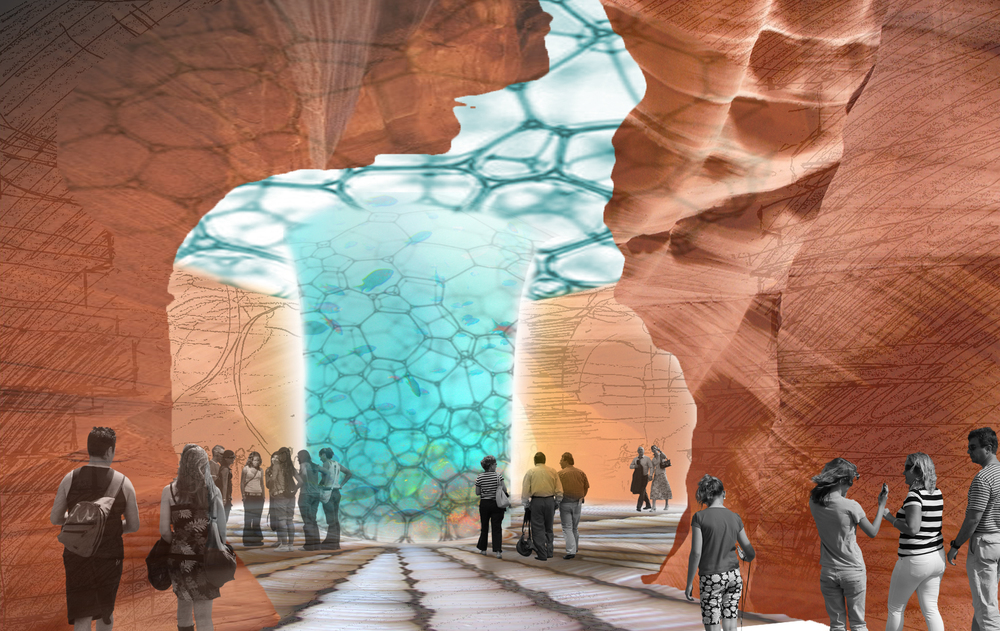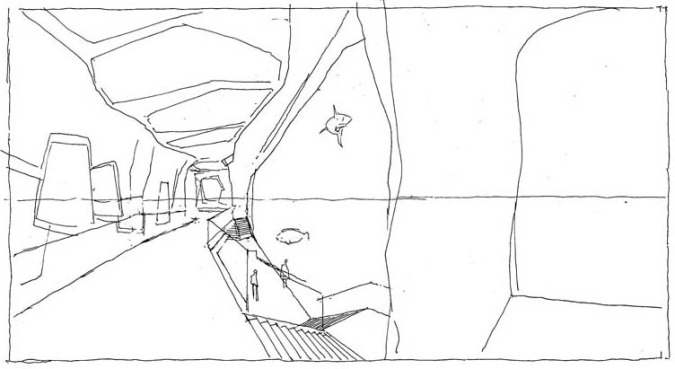It's one week before your next big design meeting. You have multiple ideas to present, but your goal is to secure your client's approval of a single direction so you can complete this phase, bill for it and move your team on to the next.
Your image boards suggest the character you want the project to have without being overly specific, but you're confused as to what kind of 3-d images to present. You want them to be provocative enough to generate a conversation, but not so photo-realistic that your client seizes upon them as proof of "what the project will look like," leaving you no wiggle room to develop your ideas later.

Back in the day, architects solved this problem by presenting loose architectural sketches (with maybe a little color thrown on them), blown up several feet wide so as to wow the client with vagueness...but times have changed and clients have changed with them.

Modern clients have grown up in a world of photo-realistic digital images.Their parents understood that hand drawn sketches and diagrams were a part of the design development process, but this generation has come to expect photo-realistic architectural renderings at every phase of design.

Problem is, photo-realism--and the illusion of finality it presents--is precisely what got you into trouble the last time you presented a design concept
What's an architect to do?

Introducing the digital architectural sketch.
Digital architectural sketches combine the versatility of digital graphics with the charm of traditional hand drawing to produce a world convincing enough to satisfy your modern client while preserving the wiggle room you need to continue developing your ideas.

And because they are more akin to collage than laborious 3-d model, they save time than can be invested in multiple ideas, as opposed to having to invent enough detail and light sources to make a single idea look convincing using traditional 3-d modeling tools.

So next time you need to present your ideas in a concept design meeting, think digital sketch, not photo-realistic rendering. You'll regain control of the design process and include your happy client in a conversation, not a lecture.
(Author James Akers is a registered architect and freelance digital and traditional architectural renderer who collaborates with some of the world's most admired architects to create inspired architectural designs, house portraits and architectural renderings in all media, including watercolor, pen and ink, pencil, photoshop and computer. Call us with your rendering needs at 413-250-8800)